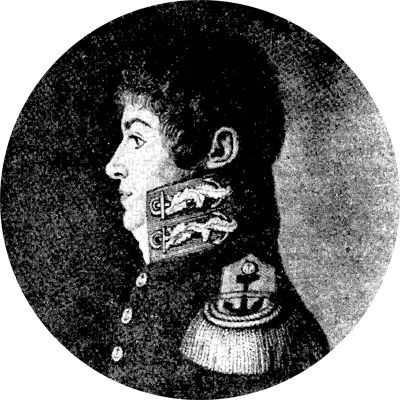Louis de Freycinet joined the French Navy in 1793 aged fifteen. He and his older brother Henri joined Baudin’s expedition in 1801. Baudin purchased the Sydney-built schooner Casuarina in 1802 when he sent the Naturaliste home, laden with specimens and those too sick to continue the voyage. He elevated Sub-Lieutenant Louis de Freycinet, above more senior officers, to command the ship.
In 1805 the expedition returned to France and Louis prepared the maps and plans of the expedition. He also completed the narrative which appeared under the title of Voyage de Découvertes aux Terres Australes.
In 1817 de Freycinet successfully lobbied the Government and King Louis XVIII agreed to support a new global campaign. Its mission was to finally determine the shape of the earth and return with detailed reports on geography, people, government, commerce and art of this new world. The 350-ton corvette Uranie had a complement of 120 men and 23 officers including the artist Jacques Arago and a priest. De Freycinet also secretly added a small cabin on the poop deck to accommodate his young wife Rose.
Over the next three years Uranie visited Australia, East Timor, many Pacific islands and South America. The ship was wrecked in the Falklands on the way home in February 1820. After a few months, de Freycinet bought another ship which he renamed the Physicienne, and finally reached Le Havre in November 1820.
Louis de Freycinet was admitted into the French Academy of Sciences and was a founder of the Paris Geographical Society. He died in 1842 still grieving the loss of Rose ten years before.

Louis-Claude de Saulces de Freycinet.
From an engraving of the original portrait in the possession of Baron Claude de Freycinet.
